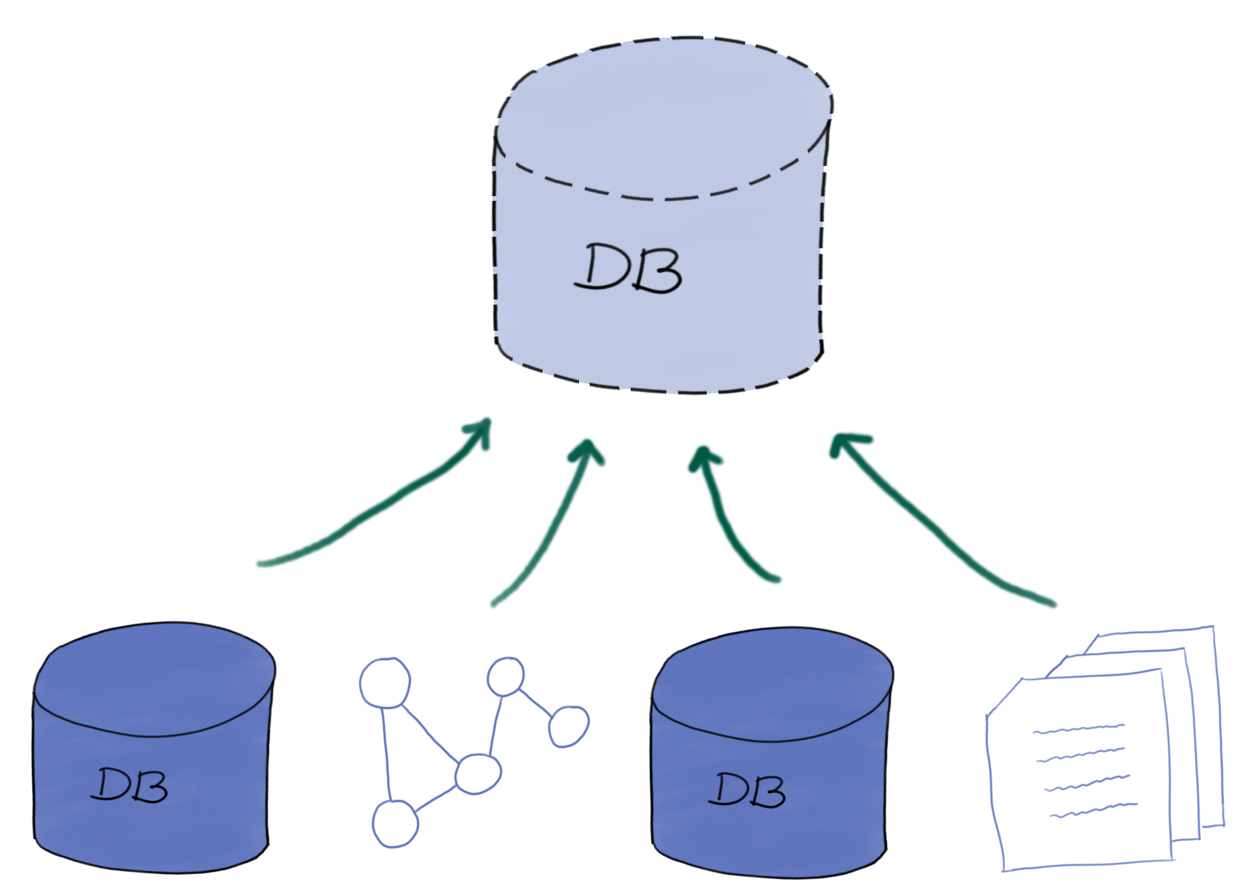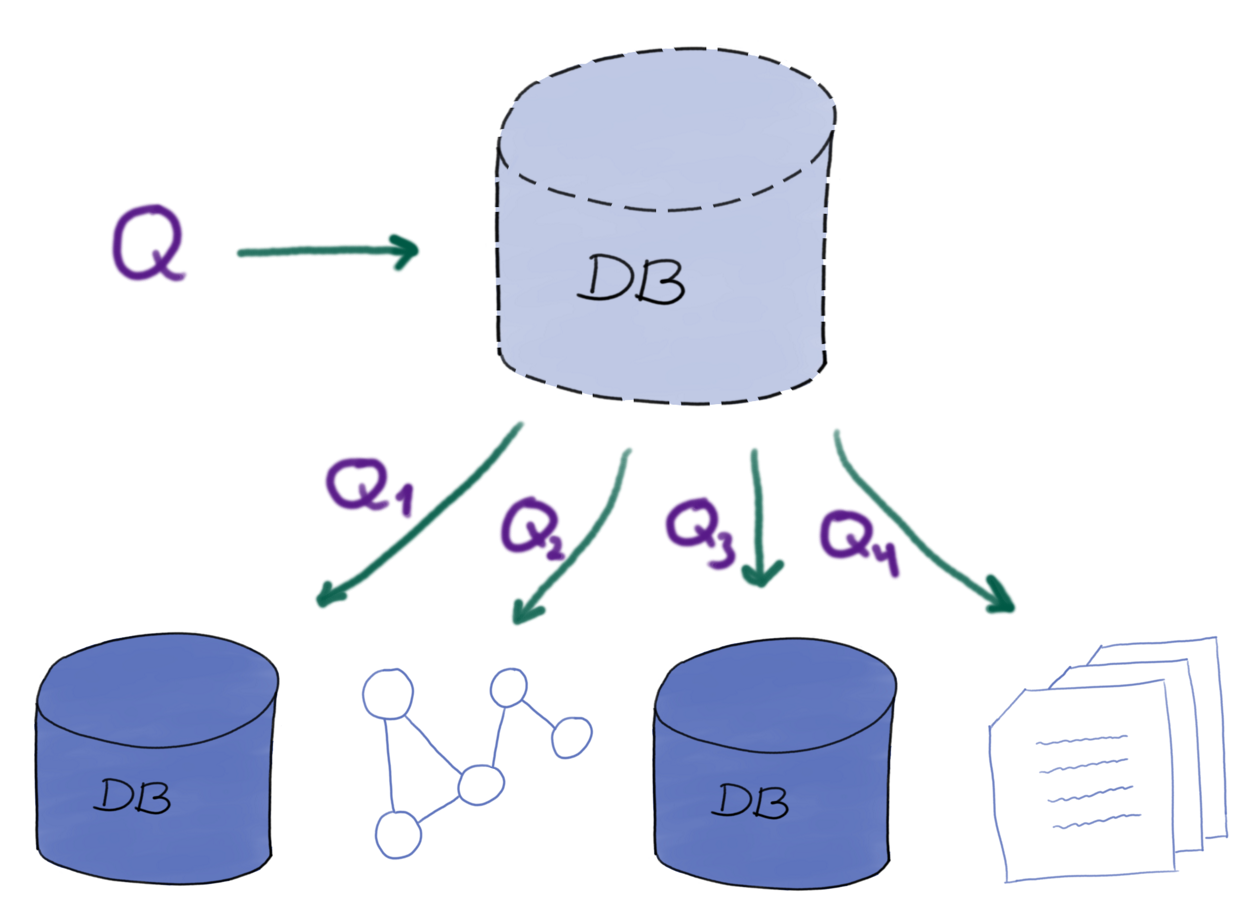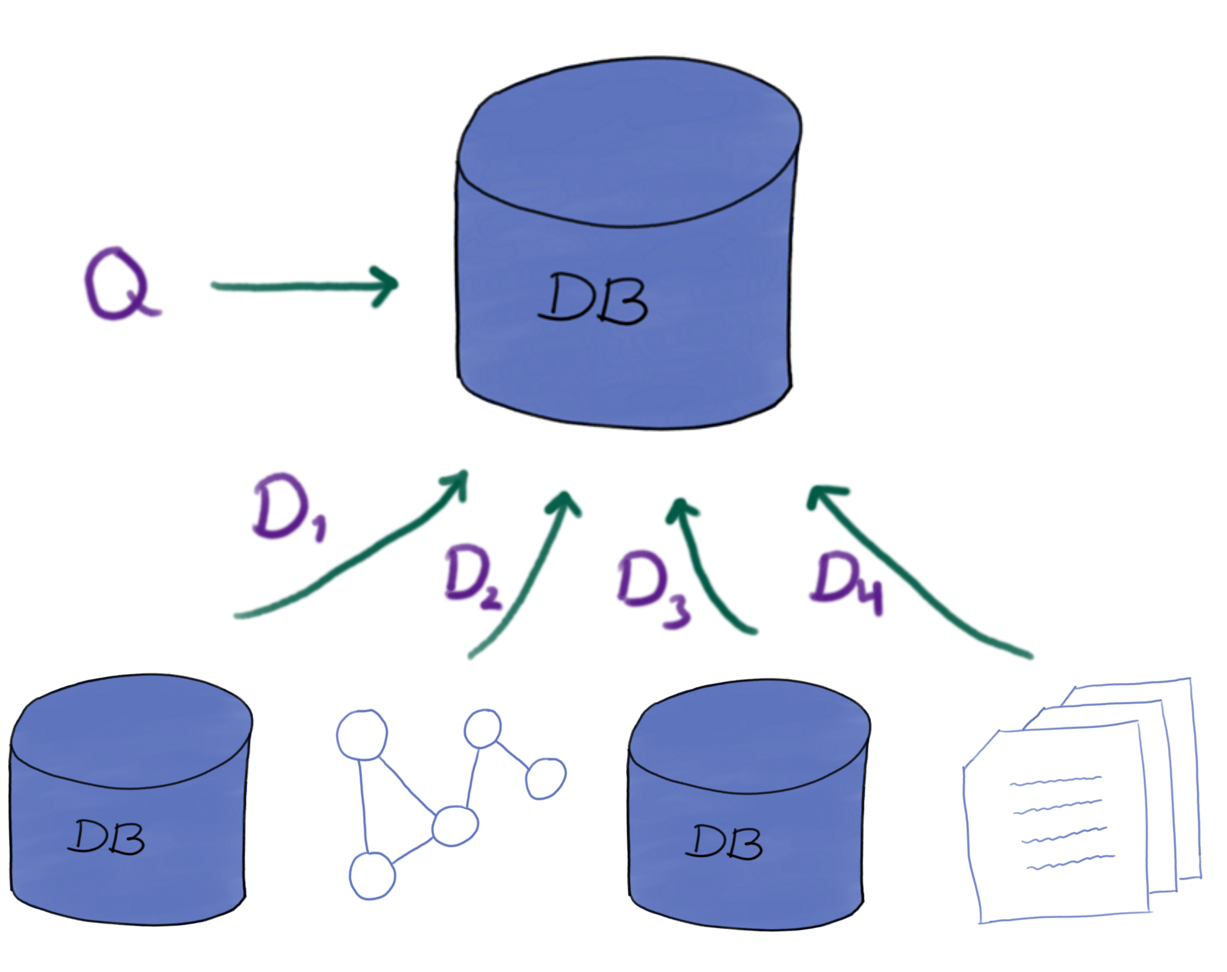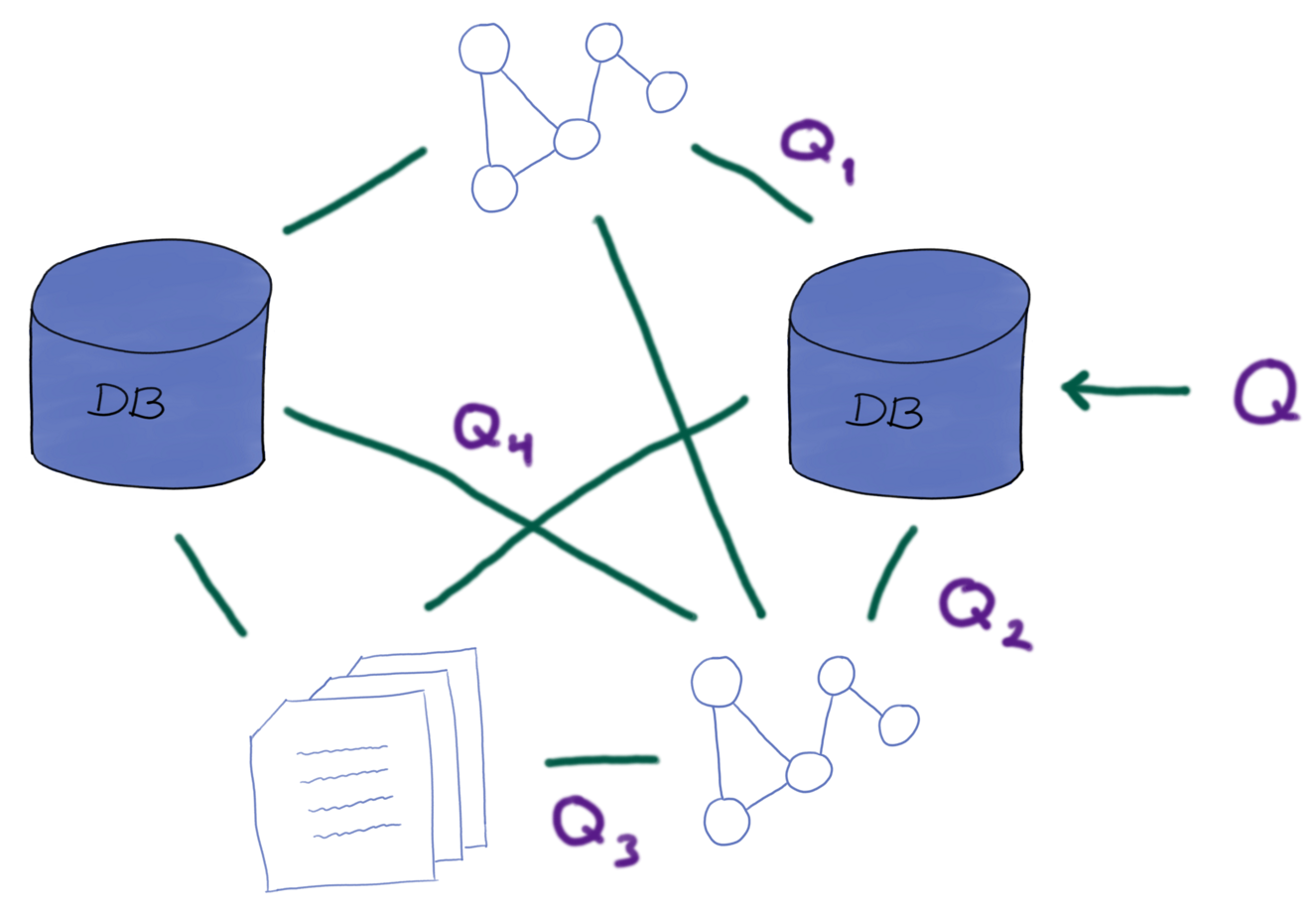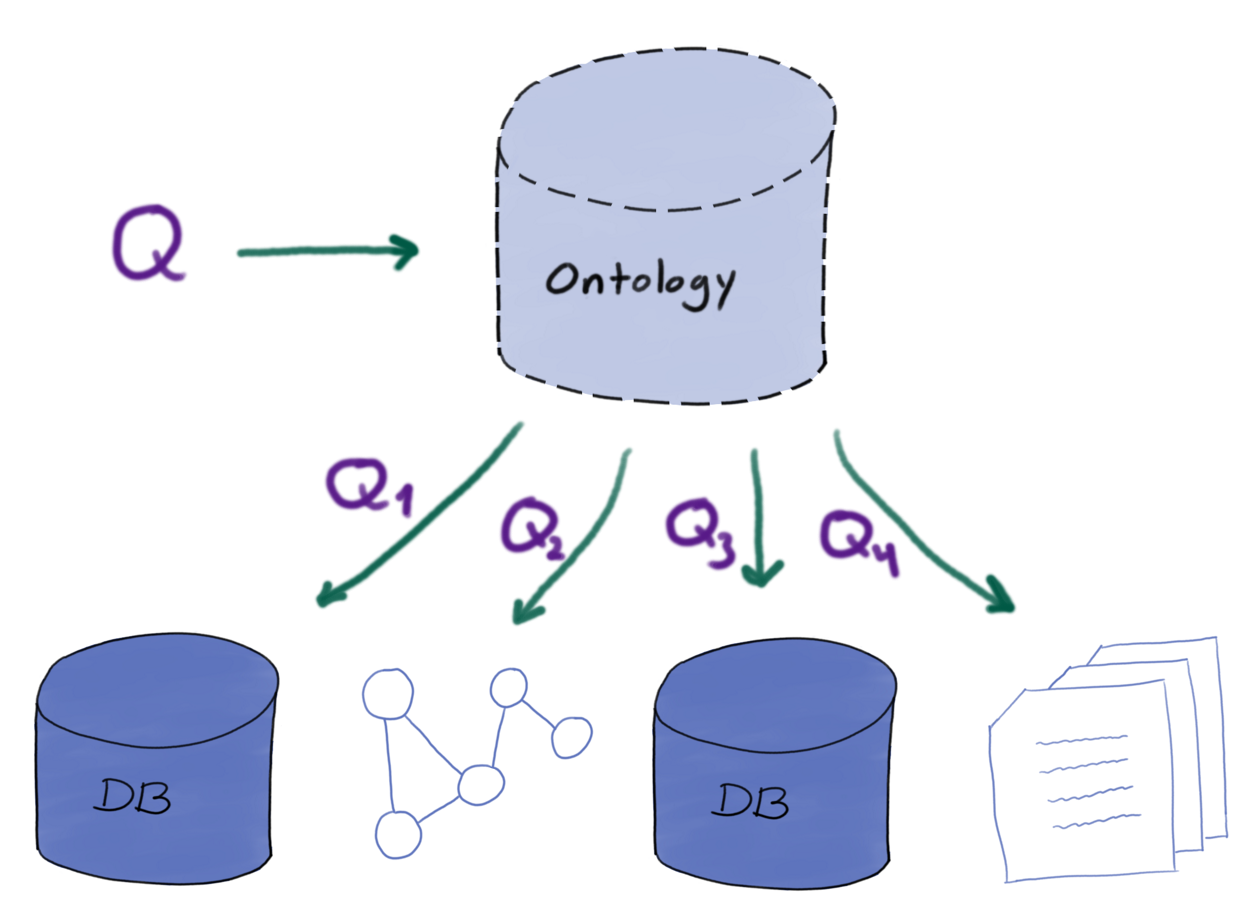CREATE RELATION Product(pid int, name text, category text);
Product(id, name, NULL) <- l1.Product(id, name, price, sup);
Product(id, name, cat) <- l2.Product(id, name, cat);
CREATE RELATION Supplier(sid int, name text, address text, country text);
Supplier(id, name, addr, 'Norway') <- l1.Supplier(id, name, addr);
Supplier(id, name, addr, 'Sweden') <- l2.Supplier(id, name, cat, addr);
CREATE RELATION Supply(supplier int, product int, price float);
Supply(sid, pid, price) <- l1.Product(pid, name, price, sid);
Supply(sid, pid, price) <- l2.Product(pid, pname, price, cat),
l2.Supplier(sid, sname, cat, addr);
